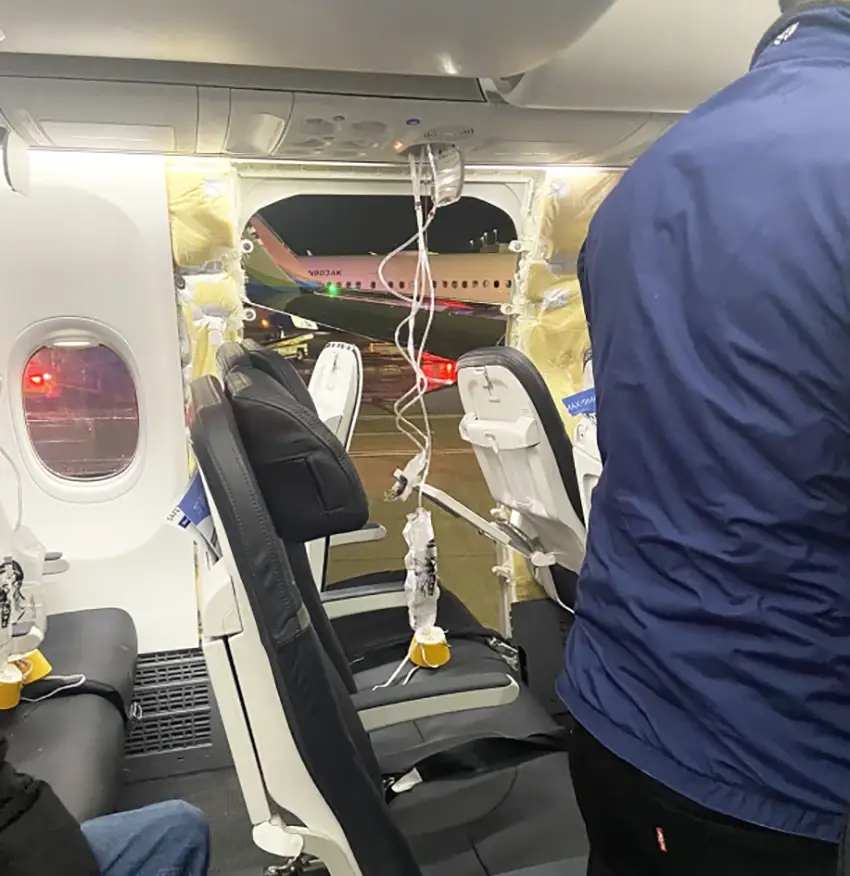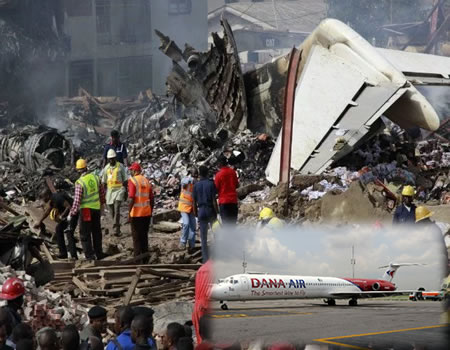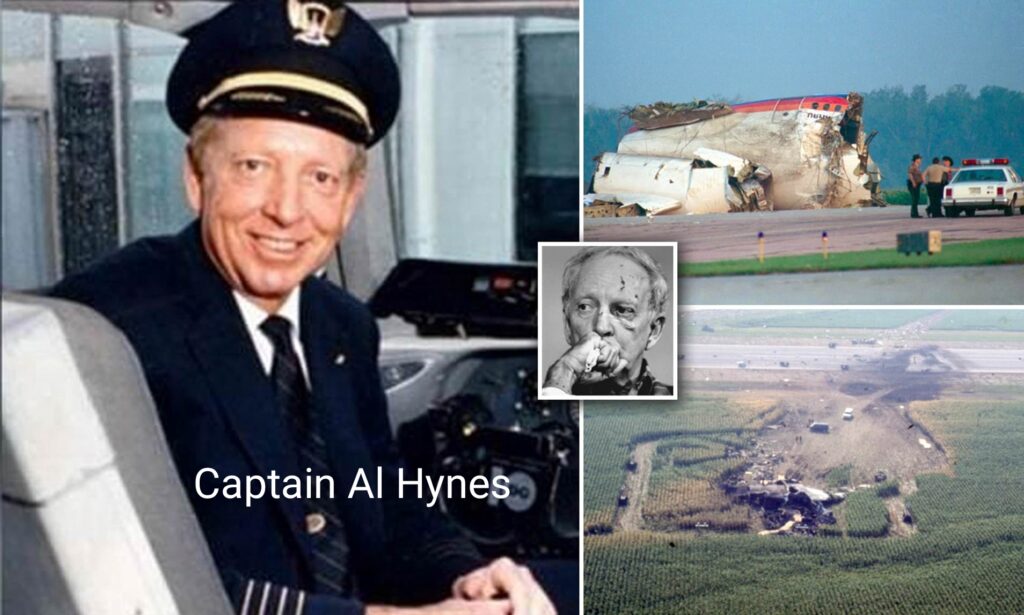Handling Mid-Air Emergencies: Lessons from Real-Life Scenarios

In the high-stakes environment of aviation, mid-air emergencies test the mettle of flight crews and the resilience of aircraft systems. This article delves into gripping accounts of real-life airborne crises.
Flying is statistically one of the safest modes of transportation, but when emergencies occur, especially mid-air, they demand precise, calm, and expert responses from flight crews.
These rare but critical incidents underline the importance of rigorous training and the implementation of detailed safety protocols to ensure passenger safety.
The Anatomy of Mid-Air Emergencies
From mechanical failures to medical crises, mid-air emergencies are unpredictable and varied. For this reason, aviation safety protocols, meticulously outlined in the 19 Annexes designed by the International Civil Aviation Organisation (ICAO), are essential for managing these crises and minimising risks.
In line with ICAO’s Standard and Recommended Practices (SARPs), airline crews undergo extensive training to handle a broad spectrum of emergencies. This training includes simulations of scenarios such as engine failure, cabin depressurisation, medical emergencies, and security threats.
Modern aircraft are also equipped with sophisticated avionics that assist pilots in diagnosing and managing emergencies, providing an additional layer of safety.
Despite these preparations, emergencies can and do happen, and the response in these situations can mean the difference between life and death.
Insights from the Cockpit
A Captain with a private airline in Nigeria, Capt. Isa Terungwa Simon, shared that pilots are trained to handle emergencies with precision and expertise.
He highlighted that emergencies are classified into two types: those requiring immediate action and those that do not. Immediate actions are critical and must be executed swiftly to ensure the safety of the aircraft and its occupants, while non-immediate actions must be managed carefully to prevent escalation.

The Quick Reference Handbook (QRH)
The Captain disclosed that a vital tool in a pilot’s arsenal during emergencies is the Quick Reference Handbook (QRH). This handbook is designed to guide pilots through the steps needed to handle various emergency situations.
He explained that the QRH is divided into colour-coded sections:
– Red Section: This includes emergencies that require immediate action. These actions may be ingrained in the pilot’s memory or require quick reference to the QRH.
– Yellow Section: This covers situations that do not demand immediate action but can escalate to critical emergencies if not addressed promptly.
“The first thing a pilot does when he/she encounters an emergency is to identify the emergency and call for the appropriate checklist in the QRH to deal with that emergency,” said Capt. Simon.
This systematic approach, according to him, ensures that all necessary steps are followed in a timely manner.
The Captain further disclosed that airlines have comprehensive emergency procedures outlined in their NCAA-approved operations manuals. These manuals are categorised from A to D, depending on the type of operations being conducted. He, however, emphasised that despite the detailed guidelines, the ultimate responsibility for the safety of passengers and cargo rests with the Captain of a flight.
“Let’s not forget that the responsibility of the safety of all paxs and cargo aboard the aircraft lies in the hands of the Captain. So he/she evaluates the situation and decides on the best course of actions to take. Actions could include declaring an emergency and landing at the nearest suitable airport to get more help,” remarked Capt. Simon.
He explained further that in specific emergency scenarios, such as bomb threats or hijackings, pilots follow specific protocols outlined in their training and manuals.
“In the event of Hijack, there’s a particular code you input into your aircraft that alerts the air traffic controllers that you have been Hijacked. The codes vary according to types of emergencies. They include: 7500 for Hijack, 7600 for communication failure, and 7700 for emergencies like Engine failures and others,” the Captain disclosed.

These codes, according to the Captain, enable swift communication with air traffic control (ATC), ensuring that the necessary support and intervention can be coordinated effectively.
These insights highlight the rigorous training and detailed procedures that pilots rely on to manage mid-air emergencies. With the QRH and approved operations manuals, pilots are equipped to handle a range of scenarios, ensuring the safety and security of all on board. The Captain’s role is crucial, requiring quick thinking and decisive action to navigate the complexities of mid-air emergencies.
Cabin Crew: The Frontline Responders
In an exclusive interview, Ms. Joy Ogbebo, Founder and CEO of Mama J Aviation and former flight attendant, shared her experiences and insights on managing emergency situations mid-air.
With a wealth of experience accumulated over her years in the aviation industry, Ms. Ogbebo provided a detailed account of handling critical incidents, ranging from medical emergencies to potential threats onboard.

Medical Emergencies at 30,000 Feet – A Severe Allergic Reaction
Ms. Ogbebo recounted a particularly harrowing experience during a flight from Dakar to Lagos. This overnight flight took an unexpected turn during breakfast service. A woman in business class requested an omelette, which she consumed only to experience severe difficulty in breathing and intense discomfort soon after.
“I asked if she was asthmatic,” Ogbebo explained, “That was when she dropped the bombshell. She wasn’t asthmatic but was allergic to eggs.” The situation escalated quickly, prompting the cabin crew to take swift action. The captain was informed, and an announcement was made to locate any medically qualified personnel onboard, but none were present.
The crew administered oxygen and moved the passenger to the economy class where she could lay down comfortably. The captain prepared for a potential unscheduled landing, continuously monitoring her condition. Thankfully, the passenger’s condition improved, and upon arrival, she was met by port health authorities for further medical attention.
This incident underscores the critical nature of immediate and effective response to allergic reactions, which can lead to life-threatening anaphylactic shock if not properly managed.
An Epileptic Episode
Ms. Ogbebo narrated another incident involving a political VIP who began displaying symptoms of epilepsy mid-flight. His security aides initially responded with panic, but Ms. Ogbebo instructed them to allow the seizure to run its course while ensuring the passenger did not harm himself.
The captain was promptly informed and prepared for potential medical intervention upon landing. However, the passenger, valuing his privacy, declined further medical assistance and disembarked normally as soon as the flight landed.

Ms. Ogbebo highlighted the rigorous training cabin crew members undergo to handle diverse emergency scenarios, from health crises to unruly passengers.
In managing pregnant passengers, for instance, Ms. Ogbebo disclosed that expectant mothers are permitted to travel by air up to seven months into their pregnancy, provided they have a medical certificate affirming their fitness to fly. Cabin crews pay extra attention to pregnant passengers, often seating them close to toilets and ensuring they remain comfortable.
In the rare event of in-flight labour, crew members, trained in emergency childbirth, are prepared to assist in the absence of a doctor.
When passengers fall ill, an announcement is made to solicit help from any medically qualified passengers. Crew members are trained in first aid and are equipped to provide immediate care until professional medical assistance is available.
In dealing with unruly passengers, Ms. Ogbebo said the cabin crew follows a protocol involving a verbal warning, followed by a formal notice about the consequences of their actions. Contacts of eyewitnesses are collected, and the captain is informed to ensure the situation is documented and handled appropriately.
Responding to threats: bomb threats and Hijackings, she said bomb threats, whether real or false, are taken seriously by airlines. Upon receiving such a threat, the captain is informed, and an announcement is made advising passengers and crew not to move or touch suspicious objects. The aircraft is directed to the nearest airport, where it is parked at a remote location to await the bomb squad.
In the event of a hijacking, the priority is to prevent hijackers from accessing the flight deck. Crew members are trained to avoid aggravating the hijackers, remain vigilant for potential accomplices among the passengers, and delay actions to prevent the situation from escalating.
The goal is to manage the crisis without inciting further danger and to avoid developing Stockholm syndrome.
Ms. Joy Ogbebo’s detailed account of handling emergencies mid-air highlights the critical role of cabin crew in ensuring passenger safety. Through rigorous training and quick thinking, crew members manage to handle a variety of crises effectively, ensuring the safety and well-being of all onboard.

Braving the odds
Although airlines are mandated to establish protocols for handling different types of emergencies, there seems to be no straitjacketed procedures for managing mid-air emergencies.
Apart from the conventional methods of using all available resources, including the crew and the aircraft systems, some emergencies require innovative problem-solving procedures, such as adopting unconventional methods to regain control of the aircraft.
The history of aviation includes notable incidents where mid-air emergencies were managed with varying degrees of success. For instance, emergency case scenarios of aircraft engine failure mid-air were either poorly managed, leading to fatalities, or effectively handled by using unconventional methods.
A case scenario of Dana Air Flight 0992, which crashed in the densely populated Iju Ishaga area of Lagos State, Nigeria, on June 3, 2012, comes to mind.
According to reports, the flight – a McDonnell Douglas MD-83 – suffered a catastrophic engine failure shortly before it crashed. The pilots declared an emergency, but were unable to manage it effectively to maintain altitude. The crash resulted in the loss of all 153 people on board and additional fatalities on the ground.

Second case scenario is Ethiopian Airlines Flight 302, a Boeing 737 MAX, which crashed shortly after takeoff from Addis Ababa on March 10, 2019, killing all 157 on board.
Five months earlier, precisely in October 2018, a Lion Air B737 Max, departing from Jakarta, Indonesia, crashed into the Java Sea shortly after takeoff, killing all 189 people aboard.
These crashes, involving the same aircraft type, were attributed to issues with the aircraft’s Manoeuvring Characteristics Augmentation System (MCAS), which repeatedly pushed the plane’s nose down due to faulty sensor readings.
In its final report, the Ethiopian Accident Investigation Bureau (EAIB) revealed electrical anomalies that existed since the aircraft was produced until it caused the Angle-of-Attack (AOA) indicator heater to fail, which resulted in the AOA sensor providing erroneous values that caused MCAS to repeatedly pitch the nose of the aircraft downward until it struck the ground.
In both cases, the flaws in the software design of the aircraft took flight control away from the pilots without their knowledge based on data from a single sensor, ultimately leading to the two 737 MAX crashes in 2018 and 2019, causing the deaths of 346 people.
In the case of Dana, the Nigerian Accident Investigation Bureau (AIB), now known as Nigerian Safety Investigation Bureau (NSIB), revealed that both of the aircraft’s engines had lost power during the approach to Lagos. The bureau also found that incorrect assembly had severed the engines’ fuel line, causing fuel to not be delivered to both engines.
Explaining what could have been the right emergency management procedures to prevent the crash, Captain Yakubu Okatahi, the Rector of International Aviation College (IAC), Ilorin, Kwara State, Nigeria, said while the first case could have been managed with precision, if the crew had followed one of the emergency management procedures for engine failure, which requires landing at a nearest airport or airstrip, the second case defied any human emergency management logic, as the aircraft type involved was manipulated by faulty sensors.
The Rector, however, attributed the incidents to human negligence, as each scenario highlights pre-registered malfunction of aircraft equipment observed but ignored by both the airline and the crew over time for inexplicable reasons.
The Dana crash underscored the need for improved pilot training on handling engine failures and emergency landings. It also led to stricter regulatory oversight and operational audits of Nigerian airlines, as one of the safety recommendations of AIB mandated the Nigeria Civil Aviation Authority (NCAA) to improve its oversight functions by ensuring regular checks are done on all aircraft types to ascertain their airworthiness.
In the cases of Ethiopian Airlines and Lion Air, the United States of America’s Federal Aviation Administration (FAA) ordered immediate grounding of the B737 MAX fleet worldwide, preventing potential future incidents.

Apart from significant sanctions against the aircraft manufacturer – Boeing, the incidents prompted significant changes in aircraft certification processes and led to improved pilot training on new systems.
On the flip side, one of the most notable examples of expert crisis management mid-air, using unconventional methods in aviation history is United Airlines Flight 232. On July 19, 1989, a DC-10 aircraft suffered a catastrophic failure of its tail-mounted engine, leading to the loss of all hydraulic controls.
The pilot, Captain Al Haynes and his crew managed to control the aircraft using differential thrust – adjusting the power of the remaining engines to steer. Despite the severe damage, the crew executed a remarkable emergency landing in Sioux City, Iowa. While 111 of the 296 passengers perished, the crew’s actions saved 185 lives.
Another good example is Southwest Airlines Flight 1380, which suffered an engine failure that led to debris breaking a window on April 17, 2018, causing rapid depressurisation.
The pilot, Captain Tammie Jo Shults and First Officer Darren Ellisor conducted an emergency descent and made an emergency landing in Philadelphia. Tragically, one passenger was lost, but the rest of the passengers and crew survived.
The two scenarios underscore the importance of assessing situations quickly and making informed decisions under pressure. This requires using clear, concise language to communicate with passengers and air traffic control (ATC), working seamlessly with co-pilots, cabin crew, and ground staff, deciding when and where to land safely, providing first aid and coordinating with medical professionals on the ground.

Also, passenger safety and calmness are critical during emergencies. Hence, enhanced simulators provide crews with realistic training experiences, preparing them for a variety of scenarios.
Crews are trained to ensure passengers know what to do and feel assured; displaying calmness and confidence to reassure passengers of safety by guiding them in using oxygen masks, life vests, and other safety equipment.
Conclusion
Mid-air emergencies test the mettle of flight crews and the robustness of training programs. The remarkable emergency scenarios captured in this article highlight the importance of preparation, quick thinking, and effective teamwork. These incidents provide invaluable lessons that continue to shape training and protocols, ensuring the safety and security of air travel for millions of passengers worldwide.







